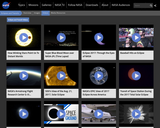
This resource collection provides numerous videos about eclipses, including those to explain and discuss the August 2017 eclipse.
- Subject:
- Science
- Material Type:
- Demonstration
- Provider:
- NASA
- Date Added:
- 07/31/2017

This resource collection provides numerous videos about eclipses, including those to explain and discuss the August 2017 eclipse.

In this lesson, students use models of the Earth, the Moon, and the Sun to explore the interactions of shadows in the Earth, Moon, and Sun system. Students manipulate and observe their 3-D models as they simulate the movement of these bodies through rotation and revolution. After their observations, they draw 2-D representations and develop further questions about their models and the natural phenomena.
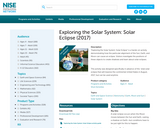
In this lesson, students demonstrate how the particular alignment of the Sun, Earth, and Moon can cause an eclipse.
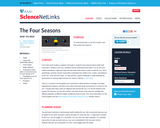
In this lesson, students demonstrate that it is the tilt of Earth's axis that causes the seasons.

Students make daily observations of the moon over many weeks to allow the phase cycle to be observed and characterized. Students also construct a working model of the Earth-Moon-Sun system and determine if they can recreate the observed phase cycle.
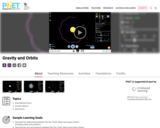
Sample Learning Goals
Describe the relationship between the Sun, Earth, Moon and space station, including orbits and positions
Describe the size and distance between the Sun, Earth, Moon and space station
Explain how gravity controls the motion of our solar system
Identify the variables that affect the strength of gravity
Predict how motion would change if gravity was stronger or weaker
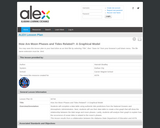
Students will complete a data table using authentic tide predictions from the NOAA. Next, students will use their data table to create a line graph that will show the relationship between the tidal range and moon phases. Lastly, students will analyze their graph to explain how the occurrence of ocean tides is related to the moon's phases.

Students determine the actual distance to the Sun and the Moon without ever leaving Earth, and in doing so will gain a better understanding of the huge distances in the Earth-Sun-Moon system. In order to determine these distances, students will apply their understanding of mathematical models in two different ways, using a single mathematical principle.

In this lesson, students will use models to demonstrate the relative positions of the Earth, Sun, and Moon and their impact on tides.
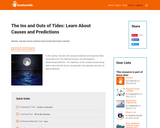
In this activity, learners will compare predicted and observed tides using data from The National Oceanic and Atmospheric Administration(NOAA). The objectives of this activity include being able to describe the forces causing tides and appraise accuracy of tidal predictions.

This kinesthetic activity demonstrates to students that the earth's tilt is what is responsible for shifting light patterns and the change in seasons.

In this activity, students will use models of Earth, the Sun, and the Moon to discover why moon phases occur. Students will also learn the order of the moon phases from one full moon to the next.

In this interactive lesson, students will use kinesthetic techniques to model Earth's orbit around the Sun for a year.

This resource supports English language development for English language learners. This resource provides background and additional resources about tides and what causes them.
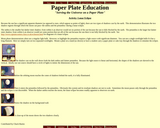
This demonstration illustrates the two shadow regions through which a moon can pass - the umbra and the penumbra - during a lunar eclipse. The demonstration uses two separated worklights and a paper plate to simulate the eclipse.

This video explains how the relative motion of the sun, Earth, and moon affect the phases of the moon and lunar eclipses.

This video explains how the relative motion of the sun, Earth, and moon affect the phases of the moon and lunar eclipses.

Students use a simulator to better understand the phases of the moon as well as the geometry giving rise to them.

Students complete several activities to better understand the Earth-moon system.